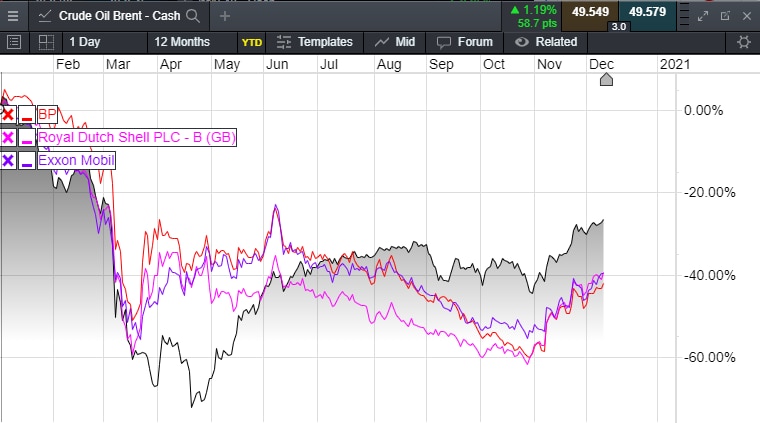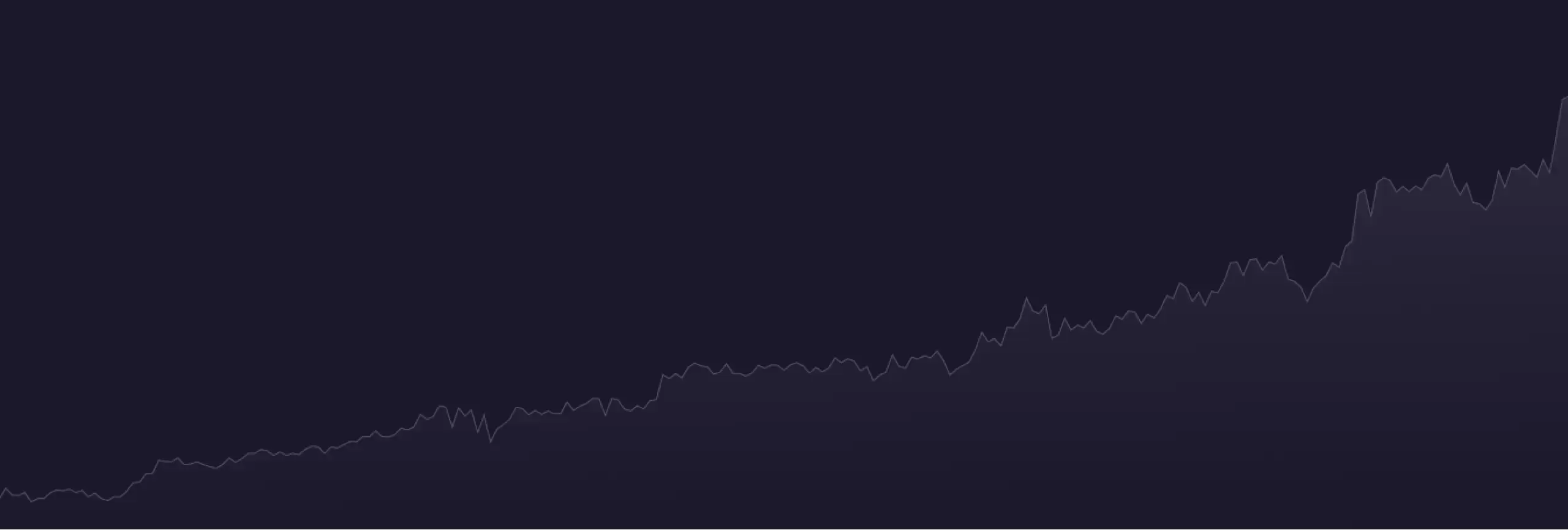
Even without this year’s pandemic, there were concerns at the end of last year that the big oil majors were running at too slow a pace with respect to the transition towards renewables, as well as a fear that their high gearings would make them susceptible to a sudden downward lurch in demand, as well as a sharp fall in prices.
BP in particular was especially susceptible given that it was already running a gearing well in excess of 30%, and while new CEO Bernard Looney had started to outline a plan to get this gearing down, the worry was that events may well overtake him, and the sector as a whole. Shell’s problems were fairly similar, albeit it did have a lower gearing of around 25%, and has been a little more proactive when it comes to investing in renewables.
In November last year, Shell bought French floating wind turbine company Eolfi, and said it would devote 10% of its yearly spending to new energy projects by 2025. At a time when climate issues had seen a much higher profile politically through 2019, this still seemed a rather low number at the time, but maybe the price of oil at the end of last year, and the attempts by Opec+ to support prices, was breeding a sense of complacency among senior oil executives.
At the beginning of the year oil prices were trading close to their highest levels in nearly two years, as a result of a series of production cap extensions by the members of Opec+, which had helped prop prices largely above the $60 a barrel level for most of 2019. This agreement was an attempt to preserve profit margins at a time when global demand was showing signs of slowing down quite markedly.
Oil output close to century-low levels
In November last year, Opec countries produced 26.8m barrels a day, down from the 32.9m barrels in October 2018, as manufacturing slowdowns in China and Germany, as well as rising trade tensions, acted as a brake on demand. Non-Opec countries, including Russia, also produced 18.8m barrels a day, bringing the daily output total in November last year to 45.6m barrels a day.
In among all of this is the US shale story, which with the rise in oil prices since 2015, saw productive capacity come back on line, with daily output of around 12.5m barrels a day, according to the EIA at the time. One year on and total Opec output has fallen to 24.7m barrels a day, and though it has recovered from the 22.5m barrels a day low in June, output still remains near the lowest levels this century.
June’s number was the lowest monthly daily output figure since 1991, as concerns over the collapse in prices prompted OPEC to slash production in an attempt to put a floor under the market, as well as preserve storage capacity, as global lockdowns rolled out in March and April and caused global demand for oil, and its by-products, to collapse and refinery capacity to fill up rapidly.
At one point US gasoline use fell to its lowest level in 26 years, forcing US shale producers to consider turning off the taps, as storage capacity quickly filled up.
While the pandemic has obviously had a large part to do with the collapse in prices, demand had been falling even before the price crash that we saw in the first quarter of this year, and which saw US prices go negative, to the tune of -$40 a barrel.
Brent Crude Oil price vs BP, Shell & Exxon share price

The collapse in the US oil price brought about the demise of a number of smaller US shale operators, who were unable to contend with oil prices at record low levels, especially since in most cases their breakeven prices were around $50 a barrel. At one point, Brent prices fell as low as $15 a barrel, before bottoming out as lockdowns were eased and the reduction in output started to have an effect.
As can be seen from the chart above, the collapse in oil prices caused a similar slide in the share prices of BP, Shell and Exxon, and while they bottomed out as oil prices continued to decline, the subsequent rebound in prices hasn’t helped them in any way shape or form, as prices slipped back to levels last seen in the mid-1990s. There are any number of reasons for this, but the main ones are mainly to do with an unwillingness to take some of the tougher decisions that needed to be taken from at least as far back as two years ago, with BP one of the biggest culprits.
BP writedown forces dividend cut, jobs cull
It’s been known for several years that BP’s dividend was a matter of concern, due to its high gearing, and then in 2018 they compounded that error by spending $10bn on the shale assets of BHP Billiton, at a time when large sovereign wealth funds and big investors were already starting to pull back from investing in oil and gas assets. These decisions came home to roost in April, forcing the company to raise an extra $10bn in the form of a new revolving credit facility, as well as issuing $7bn in new bonds. It therefore beggared belief that they still decided to pay the same level of dividend, before being forced to bite the bullet and cut it in August, but only after taking a $15bn writedown in June, as well as announcing the loss of 10,000 jobs.
With the dividend halved, management are now faced with the challenge of rightsizing the business for a global economy that is likely to see much lower demand for its core products. BP said in October that it remains on target to meet its capex budget this year at $12bn, and expects 2021 capex to come in at the lower end of the $13bn to $15bn range. In terms of its transformation agenda, BP has agreed to enter the offshore wind sector through a deal with Equinor, which is expected to complete next year, and is also looking to expand its Chargemaster business to deploy over 1,000 charging points for Police Scotland. While all of this is encouraging, these are very much small ticket items, which means that their new “Performing while Transforming” strategy is likely to require a lot more patience. The dividend was kept unchanged at 5.25c.
Royal Dutch Shell has been slightly ahead of the game when it comes to dealing with some of its legacy issues, or stranded assets as they are sometimes known, but this year has been no less painful. At the end of last year, the company took a Q4 impairment charge of between $1.7bn and $2.3bn, while reducing its capex guidance to the lower end of a $24bn and $29bn range.
Shell reports $18bn Q2 loss, cuts dividend
In April this year, Shell management followed this up by taking the unpopular decision to cut the dividend for the first time since 1945, from $0.47 a share to $0.16 a share, as well as rolling up its buyback programme. In June, the company went further and wrote down the value of its assets by up to $22bn, before posting an $18bn loss in its Q2 numbers. This was then followed up in October by taking another $1bn and $1.5bn in impairment charges in Q3, though it did nudge the dividend up to $0.1665 a share. The company also said it would be looking to cut 9,000 jobs between now and the end of 2022.
While all of the above has the sense of management playing catch up, what the pandemic has done is focus minds on the sort of global economy that is likely to emerge when we come out of the dark Covid hole we are currently in. The big question now is whether the big oil companies have acted swiftly enough to safeguard their cashflow, at the same time as reducing their carbon emissions in a manner that will allow them to transition their business models to be able to meet everchanging climate targets.
Pressure to grow on transition to renewables
Shell has said it wants to reduce greenhouse gas emissions to net zero by 2050, or sooner, as has BP, and while their aims are more ambitious than the likes of Exxon and Chevron, the reality is they could be forced to cut quicker if governments adopt more climate-friendly policies. To that end, this deadline could well change in the face of environmental pressure, and it will be up to BP CEO Bernard Looney, as well as Shell CEO Ben van Buerden, as to how they go about tackling the issue of transitioning away from fossil fuels towards renewables, at a pace that keeps the competing claims of shareholders and climate activists happy. There is also the risk of government intervention as politicians come under increasing pressure to discourage fossil fuel usage, and drive investment in renewables.
With renewables set to become a growing part of the UK and the world’s energy needs, companies like BP and Shell have the financial clout to be able to deliver solutions quicker than governments, and with awareness surrounding climate issues rising as a result of organisations like Extinction Rebellion, the oil majors need to show that they are at the forefront of climate solutions. Currently capital expenditure around renewables remains well below the levels allocated to big oil and gas projects, and this really needs to change, as we look towards 2021.
Whether or not we see a better performance in the months ahead is likely to depend on firstly, whether current rebounds in the oil price so far since April are sustained, but also in how successful both companies are in diversifying away from their traditional business models. Both have made decent progress in terms of their gas businesses and in cutting costs, but more progress needs to be made, particularly around renewables.
Disclaimer: CMC Markets is an execution-only service provider. The material (whether or not it states any opinions) is for general information purposes only, and does not take into account your personal circumstances or objectives. Nothing in this material is (or should be considered to be) financial, investment or other advice on which reliance should be placed. No opinion given in the material constitutes a recommendation by CMC Markets or the author that any particular investment, security, transaction or investment strategy is suitable for any specific person. The material has not been prepared in accordance with legal requirements designed to promote the independence of investment research. Although we are not specifically prevented from dealing before providing this material, we do not seek to take advantage of the material prior to its dissemination.




















